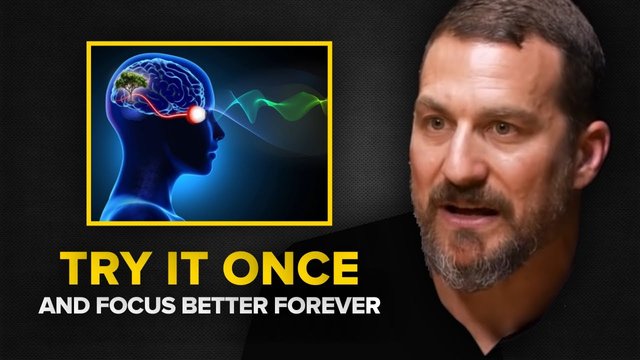How To Boost Your Focus PERMANENTLY in Minutes:-
If ever there was a tool that stood to rewire our attentional circuitry in a powerful way, this seems to be it. A simple practice taking 17 minutes can forever rewire your brain to be able to attend better and offset some of that attentional drift, regardless of whether or not you're a child or an adult, whether or not you have ADHD or not. The effects are significant, long-lasting, and they appear to exist after just one session of this quiet 17-minute interoception.
Understanding Focus and Attention:
Let's take a step back and think about how we focus and how to get better at focus. I'm going to share with you a tool for which there are terrific research data that will allow you, in a single session, to enhance your ability to focus in theory forever. And no, I'm not going to try and convince you to meditate.
What we're about to talk about is when attention works and when attention falters. Specifically, we're going to talk about attentional blinks. People with ADHD tend to have many more attentional blinks than people who don't have ADHD. This is true for both children and adults.
Attentional blinks occur when we over-focus on something and consequently miss other information. This leads to an interesting hypothesis about what might go wrong in ADHD. While we've always thought that people with ADHD cannot focus, it turns out that they can focus on things they care very much about. The difference may be that they experience more attentional blinks than people who do not have ADHD. Excitingly, there are data to support this possibility.
The Role of Open Monitoring:
What people with ADHD really need is a property called open monitoring. Open monitoring is typically associated with people who have practiced meditation or have learned how to consciously dilate their gaze to achieve panoramic vision. However, there's a simpler version of open monitoring that can be practiced by anyone, regardless of whether or not they have ADHD.
Your visual system has two modes of processing: the soda straw view and panoramic vision. The soda straw view is a high level of attention where you're focused on something specific and potentially missing other things. On the other hand, panoramic vision allows you to consciously dilate your gaze and see a wider angle of the world. Panoramic vision is mediated by a separate set of neural circuits that are better at processing things in time.
By learning how to consciously dilate your gaze and practice open monitoring, you can improve your ability to focus and reduce attentional blinks. There are published accounts of a simple 15-minute practice where subjects focused on their breathing and their internal state. Remarkably, just doing this once significantly reduced the number of attentional blinks in participants.
Benefits for Cognitive Decline:

As people age, their working memory and ability to focus deteriorate, leading to an increase in attentional blinks. However, studies have shown that the same meditation-like practice of sitting quietly and focusing on one's breathing and internal state can help offset age-related cognitive decline.
So regardless of whether you're a child or an adult, whether or not you have ADHD or are experiencing age-related cognitive decline, a simple practice of taking 17 minutes to sit and pay attention to your internal state can forever rewire your brain to be able to attend better and possibly offset some of that attentional drift.
I don't expect everyone to start meditating regularly, but most of us could handle one meditation session of 17 minutes. It is a powerful tool to rewire our attentional circuitry and engage in panoramic vision, allowing the brain to detect more information faster. The effects are significant, long-lasting, and they appear to exist after just one session of this quiet 17-minute interoception. It is a very worthwhile thing to do for everybody.